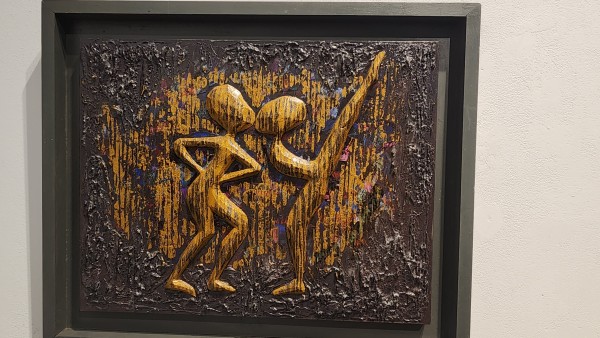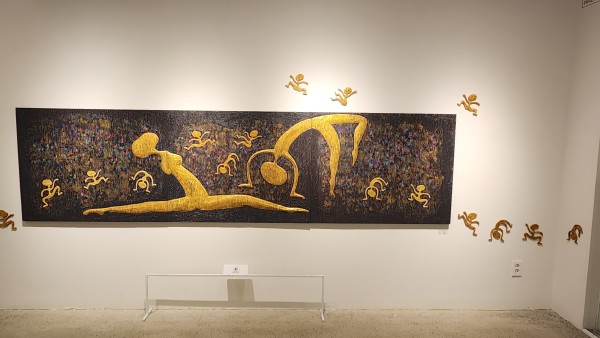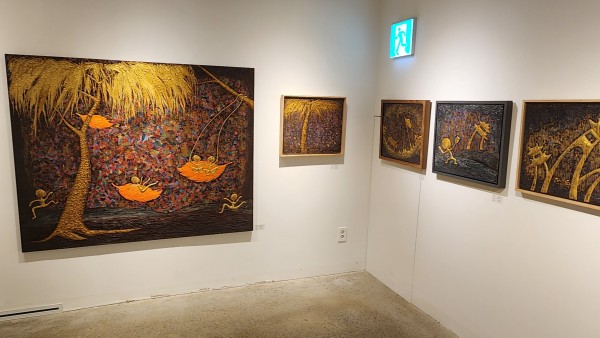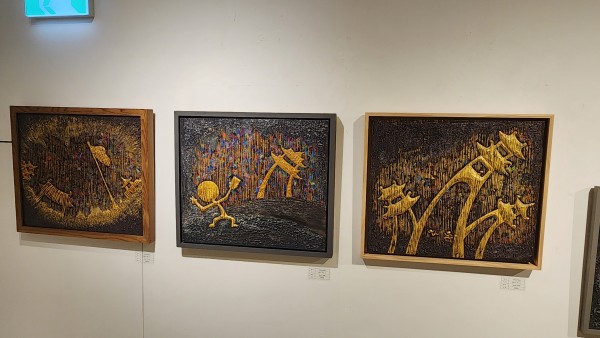

From October 29 to November 3, 2025, painter Ham Sun-Ju held her solo exhibition at The Star Gallery, located in the heart of Insadong (37-1 Insadong-gil, Jongno-gu, Seoul).
The exhibition unfolded in the gallery’s basement level, while the artist also participated in a group show on the first floor—offering visitors a multi-layered and immersive artistic experience within Seoul’s most traditional art district. Bathed in the calm glow of autumn,
Ham’s exhibition harmonized with the tranquil alleys of Insadong, presenting a deeply personal reflection on emotion and thought.
Through her work, she offered audiences a quiet moment of introspection—an encounter with the sacred pulse of life itself.
At the core of Ham’s practice lies the theme “Conception.” Her work contemplates the sanctity of life and the fragile yet enduring bonds of family in a society increasingly defined by fragmentation and disconnection.
The series also embodies ideals of hope, renewal, and the pursuit of fulfillment, translating them into tactile, symbolic form.
The title of her work “A Hundred-Year-Old Child, A One-Year-Old Adult” poignantly mirrors the imbalance of modern society—where low birth rates and population aging coexist in uneasy tension.
Ham hopes her art will awaken empathy and spark reflection on these shared realities, perhaps even inspiring new ways of thinking about the future. Within her studio, fragments of clay and wood await like seeds of memory.
For Ham, every mosaic shard becomes a heartbeat, every imprint a whisper of time. Her surfaces borrow the texture of old wood and humble materials, yet beneath them something profoundly human stirs.
“My theme is conception,” she says softly. “To conceive is to hold life, to honor family, and to face the delicate urgency of existence.” Ham’s voice, like her art, lingers in the air.
Her career, now at her fourth solo exhibition, unfolds like a long poem about life—each show a stanza in her evolving meditation on birth and being.
Earlier works imagined her future family: the dream of twins born into light, growing, and stepping into adulthood.

Over time, imagination met reality—her own children grew and ventured into the world. And as she watched them depart, she began to see the broader landscape of a country with fewer children and more solitary elders.
“There’s imbalance everywhere,” she notes. “Births are declining, while old age keeps stretching forward.
Even in classrooms, I see it—fewer desks, smaller groups, merged departments. The future can be felt before it arrives.”
Her works resemble womb-worlds—luminous, tender spaces where small beings tumble toward the world they have yet to meet.
The sculptures radiate joy and innocence, though contained within solemn frames—like laughter echoing inside a cathedral. “I wanted brightness to feel reverent,”
Ham explains. “Life is sacred not because it is fragile, but because it is fiercely hopeful.” She speaks, too, of persona and purity—how adulthood builds masks, while childhood instinctively sheds them.
Her art reaches toward the untamed soul we once carried, before society asked us to conform, to succeed, to survive. “When a child prepares to enter the world,” she reflects, “they must believe the world is worthy.
My work asks: what kind of world are we offering them?” Ham does not claim to solve the issues of demography, policy, or economics. Instead, she places clay and color into the world like lanterns. “Sometimes art is quiet activism,” she says.
“Not argument, but reminder. Not strategy, but seed. When words grow heavy, images begin to speak. People may not always read—but they feel. And feeling can move nations.”
Her journey has not been without silence and struggle—times when paint refused to obey or when life pressed too heavily. Yet time, steadfast and patient, carried her through. Now, she works with renewed playfulness, as if returning to wonder, to the rhythm of creation itself.
“Some say my works look alike,” she smiles. “But inside them—I am always changing.”
Ham sees Korean art not as a technique but as a shared breath. To her, it is “any art a Korean heart can recognize.”
And so she continues—through themes of birth and aging, solitude and connection, toward the imagined future her art gently envisions.

Her work insists that existence itself matters—that every act of beginning proposes a new universe. Every womb, she reminds us, prepares another world.
Currently, Ham Sun-Ju is also showing new works alongside Kim Chae-ung in a two-person exhibition at Changmun Art Center (9 Namyang-ro 1405beon-gil, Namyang-eup, Hwaseong-si, Gyeonggi-do) from November 6 to 30.
This show intertwines Ham’s exploration of low birth rates with Kim’s nostalgic recollections of the 1970s–80s Korean childhood—children chasing insecticide trucks and playing in the streets.
Ham, however, notes with sadness how such scenes have largely vanished—few children now run along the streets, replaced by after-school academies and the pressures of dual-income households.

The Changmun Art Center itself carries symbolic resonance: once a rural elementary school closed due to population decline, it has been reborn as a creative space.
There, in the quiet classrooms of the past, Ham’s art once again speaks of beginnings—of how life, even after silence, can still find a way to start anew.
